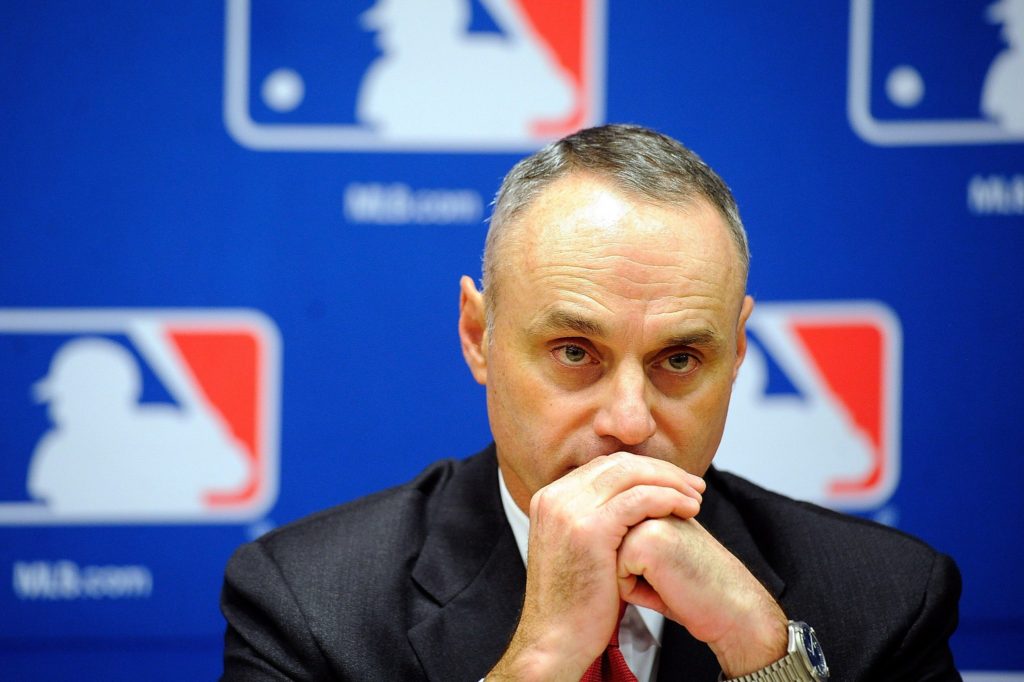Commissioner Rob Manfred’s Obsession with Pace of Play


Just two short months ago, the weirdly inactive free agent market led to rumblings about the end of labor peace in Major League Baseball. However, the market started to move slowly, and every team played on the first day of the new season. Continuation of the uneasy truce will rely on the relationship between the Major League Players Association and Commissioner Rob Manfred, especially in light of his obsession over the pace of play.
The pace-of-play problem seems to exist mainly between Manfred’s ears. From the beginning of the sport, one of the appeals of baseball has been the lack of a time limit or a clock. The game itself evolves inning to inning, and, as Yogi Berra famously said, “it ain’t over till it’s over”.
Manfred, who took over for Bud Selig as commissioner in 2015, does have worthy goals, including increasing the interest of the younger demographic in the game, making technological advances, and improving management’s relationship with the guys who actually play the game, as well as picking up the pace of the games.
A graduate of Cornell’s School of Industrial and Labor Relations and Harvard Law School, Manfred first advised MLB during collective bargaining in 1987 and acted as outside counsel during the 1994-5 strike. Hired full time in 1998, he successfully negotiated a drug testing agreement with the MLPA.
But, unlike his predecessor, Bud Selig, he hasn’t played the role of official fan. In 1970 Selig bought the bankrupt Seattle Pilots and turned the team into the Milwaukee Brewers. Despite his numerous shortcomings, especially ignoring the steroid crisis for too long, Bud Selig obviously loves the game.
Manfred does not exude the same affection, and instead seems obsessed with fixing something that may be bent instead of broken. In 2017, MLB revenues exceeded $10 billion for the first time, an increase of $500 million since the end of the 2015 season. In 2017 almost 72,700,000 fans attended games, (an average of 30,000 per game).
Have game times increased? Yes, to 3.05 hours, four more minutes the preceding year. The players have agreed that steps should be taken to reduce game times, but they balk at three rule changes in particular: initiating a pitch clock, putting a runner on second base to begin extra-inning games, and limiting mound visits to six per nine innings. All rule changes will be implemented at the Double-A and Triple-A levels.
Only the mound visit rule has taken effect at the major league level. Catchers Martin Maldonado of the Los Angeles Angels and Wilson Contreras of the Chicago Cubs have already threatened to ignore the rule regarding mound visits, and others may follow. Frequent pitching changes, as well as sign stealing (brought to a new level by the Boston Red Sox who were fined for using an Apple Watch last year), can increase the need for mound visits.
The union has rejected the idea of a pitch clock at the major league level. However, Manfred threatened to enforce it before the season started, but hasn’t so far. Fans and players have saved the most strenuous objection to putting a runner on second in extra-inning games.
Players have suggested that MLB should cut down the time of instant replay and commercials before instituting any other changes. In light of the recent labor unrest and the grievance filed against the commissioner’s office regarding “tanking” teams like the Miami Marlins, Manfred should back off of making extensive changes in the way baseball has been played for more than a century.
Baseball has been a part of Diane’s life since her father played professionally (mostly at the minor league level). She has written for a number of publications and concentrated on companion animal welfare. She welcomes the opportunity to write about the sport she loves. Diane shares her home with her husband and a house full of rescued animals.